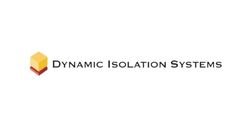Total: $7.995,00


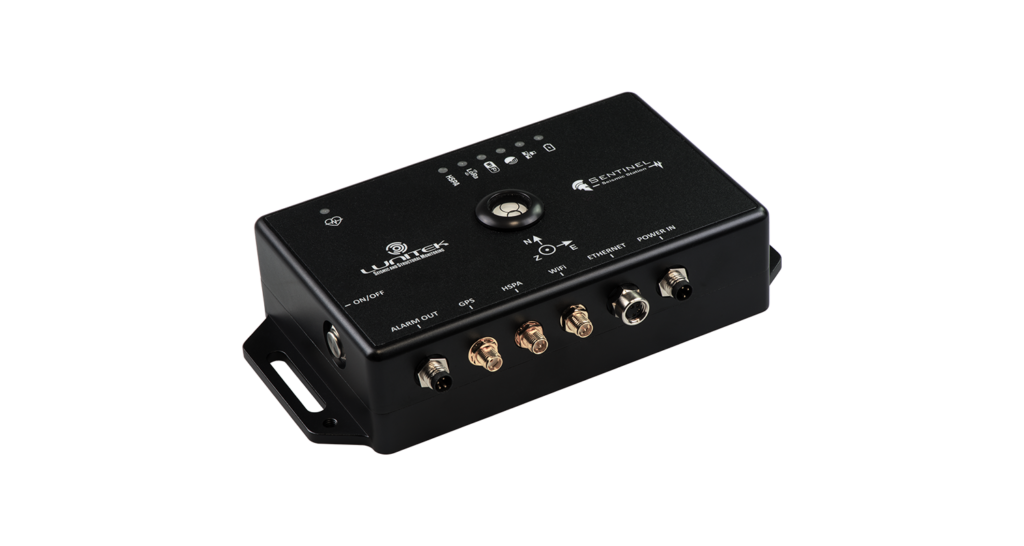
SENTINEL is a cost-effective, high-performance seismic recorder with a triaxial MEMS accelerometer, 1000 sps sampling, and low-noise (<18µg/√Hz). It features MiniSEED storage (32-256 GB), advanced triggering (STA/LTA, threshold), and GNSS time synchronization.
With LAN, WiFi, and optional 4G, it supports remote access and integrates with SeisComP3, Antelope, and Earthworm via SeedLink protocol. The rugged aluminum casing, 5-hour UPS backup, and optional seismic switch relays ensure reliable operation in the field.
$2.150,00
SENTINEL features an onboard MEMS triaxial accelerometer, capable of synchronous sampling up to 1000 sps at 20-bit resolution (24-bit for SENTINEL-X). It delivers a dynamic range of >85 dB (>110 dB for SENTINEL-X) and low self-noise (<18µg/√Hz), ensuring highly accurate seismic data acquisition.
With an integrated 32-256 GB memory bank, it supports long continuous recordings and event-based data storage in MiniSEED format. Sophisticated trigger algorithms (STA/LTA, threshold) help differentiate real seismic events from environmental vibrations.
An internal GNSS receiver ensures precise absolute time synchronization across networks. SENTINEL can be controlled locally via LAN/WiFi or remotely using an optional 4G modem, enabling seamless integration into standalone or MASTER-SLAVE monitoring networks. It is fully compatible with Triton and Atlas, making it ideal for near-field seismic monitoring where superior dynamics are required.
With SeedLink protocol support, SENTINEL integrates with industry-leading seismic analysis software, including SeisComP3, Antelope, and Earthworm.
Powered by an external 5-16V DC source, SENTINEL includes an internal LiPo battery (18650 standard) that provides 5 hours of backup power in case of outages. The optional HSPA modem is also backed up by the internal battery for continuous operation.
SENTINEL can be optionally equipped with three relay outputs, functioning as a seismic switch to shut down critical systems like elevators, pumps, gas valves, or activate alarms, sirens, and lights during seismic events.
Encased in anodized aluminum, the rugged and shock-resistant design makes it ideal for field applications. The adjustable mounting plate simplifies leveling for quick and precise deployment.
SENTINEL: Reliable, accurate, and built for advanced seismic monitoring applications.
| Weight | 1 kg |
|---|---|
| Dimensions | 20 × 20 × 20 cm |
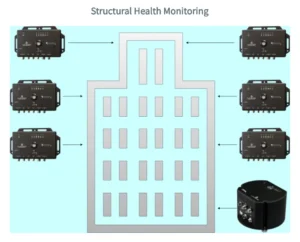
Structural health monitoring is one of the main applications of SENTINEL, with tall buildings, where heavy oscillations excite the structure and the amplitude of physical signals is considerable, SENTINEL performs well even if its dynamic range cannot compete with that of TRITON’s.
In a scenario like this, the only high dynamic (and thus more expensive) accelerograph is placed on the ground floor, where the oscillations of the structure are negligible.
SENTINEL and TRITON can be interfaced and controlled using QUAKELOGIC’s Structural Health Monitoring software.
A real-time report of the building and a post-earthquake evaluation of the structural damage can be locally displayed or trasmitted remotely.
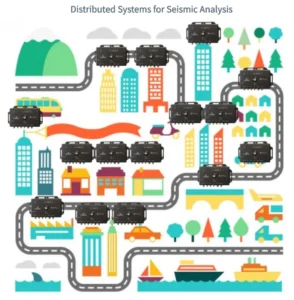
The good performance/price ratio makes SENTINEL the ideal choice when building a distributed system aimed at creating an array of seismic data.
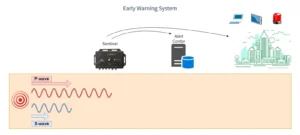
Earthquake early warning (EEW) concept is the rapid detection of earthquakes and the alerting of people to shaking.
SENTINEL can detect the non-damaging P-waves and transmit the information about tremors to an alarm center or directly to predefined users before the most damaging S-waves arrive.
SENTINEL is currently used for an ongoing project with the INGV (National Institute of Geophysics and Volcanology) which is experimenting with AI algorithms to detect the earthquake autonomously and quickly.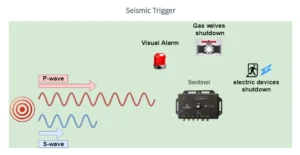
SENTINEL would be an excelent solution for deactivating sensitive electronic devices when a seismic event is detected, closing gas valves or warning people.
Sentinel models available
Answer: Yes, SENTINEL may do both tasks in parallel. For event-triggering, threshold exceedance instead of STA/LTA is recommended for accelerometers.
Answer: The telemetry works through SeedLINK protocol, which holds data in its ring buffer whose size is by default 1GB (expandable): it corresponds to some days of continuous recording. When the telemetry goes down, the client may request data from the last packet received before the break and then recovered all the missing data. This is automatically handled by the SeedLINK client. Whether the telemetry is up or down, the device always stores data in a separate folder and the telemetry (SeedLINK) server detects it, and copies data in its ring buffer, ready to be sent on request.
Answer: This could be done in two ways. For example, if the 2 or more SENTINEL digitizers are in the same LAN segment, either SENTINEL could reach the trigger status and trigger all the other units with a broadcast message. If they are installed in different LAN segments (for example there is a gateway in the middle), this won’t work and we should install an additional module on a Linux machine that catches the alarms from the devices and implements a trigger voting algorithm.
Answer: MiniSEED, just like the continuous recording. But if we install the QUAKELOGIC Event Watchdog software to the remote server, the trigger files may be sent automatically to a remote server and exported in ASCII format, or the server may extract the event data from the continuous recording and perform the export. For example, this would be the best way to interact with a LABVIEW application.
Answer: The SENTINEL digitizer can communicate with the remote server (Linux Machine) through MQTT and SeedLINK. The Linux Machine takes care of storing all the continuous recordings from the SENTINEL devices and receives the trigger data through MQTT or just extracts it from the continuous buffer. At this point, data is still available in MiniSEED. Once we have a time window for an event, we may export it in ASCII.
Answer: The SENTINEL digitizer can be powered by a 12 V solar panel (>100 W). The system requires a solar panel, 12V backup battery and controller unit. QuakeLogic can provide all these auxiliary hardware including on-site installation.
SENTINEL features an onboard MEMS triaxial accelerometer, capable of synchronous sampling up to 1000 sps at 20-bit resolution (24-bit for SENTINEL-X). It delivers a dynamic range of >85 dB (>110 dB for SENTINEL-X) and low self-noise (<18µg/√Hz), ensuring highly accurate seismic data acquisition.
With an integrated 32-256 GB memory bank, it supports long continuous recordings and event-based data storage in MiniSEED format. Sophisticated trigger algorithms (STA/LTA, threshold) help differentiate real seismic events from environmental vibrations.
An internal GNSS receiver ensures precise absolute time synchronization across networks. SENTINEL can be controlled locally via LAN/WiFi or remotely using an optional 4G modem, enabling seamless integration into standalone or MASTER-SLAVE monitoring networks. It is fully compatible with Triton and Atlas, making it ideal for near-field seismic monitoring where superior dynamics are required.
With SeedLink protocol support, SENTINEL integrates with industry-leading seismic analysis software, including SeisComP3, Antelope, and Earthworm.
Powered by an external 5-16V DC source, SENTINEL includes an internal LiPo battery (18650 standard) that provides 5 hours of backup power in case of outages. The optional HSPA modem is also backed up by the internal battery for continuous operation.
SENTINEL can be optionally equipped with three relay outputs, functioning as a seismic switch to shut down critical systems like elevators, pumps, gas valves, or activate alarms, sirens, and lights during seismic events.
Encased in anodized aluminum, the rugged and shock-resistant design makes it ideal for field applications. The adjustable mounting plate simplifies leveling for quick and precise deployment.
SENTINEL: Reliable, accurate, and built for advanced seismic monitoring applications.
| Weight | 1 kg |
|---|---|
| Dimensions | 20 × 20 × 20 cm |

Structural health monitoring is one of the main applications of SENTINEL, with tall buildings, where heavy oscillations excite the structure and the amplitude of physical signals is considerable, SENTINEL performs well even if its dynamic range cannot compete with that of TRITON’s.
In a scenario like this, the only high dynamic (and thus more expensive) accelerograph is placed on the ground floor, where the oscillations of the structure are negligible.
SENTINEL and TRITON can be interfaced and controlled using QUAKELOGIC’s Structural Health Monitoring software.
A real-time report of the building and a post-earthquake evaluation of the structural damage can be locally displayed or trasmitted remotely.

The good performance/price ratio makes SENTINEL the ideal choice when building a distributed system aimed at creating an array of seismic data.

Earthquake early warning (EEW) concept is the rapid detection of earthquakes and the alerting of people to shaking.
SENTINEL can detect the non-damaging P-waves and transmit the information about tremors to an alarm center or directly to predefined users before the most damaging S-waves arrive.
SENTINEL is currently used for an ongoing project with the INGV (National Institute of Geophysics and Volcanology) which is experimenting with AI algorithms to detect the earthquake autonomously and quickly.
SENTINEL would be an excelent solution for deactivating sensitive electronic devices when a seismic event is detected, closing gas valves or warning people.
Sentinel models available
Answer: Yes, SENTINEL may do both tasks in parallel. For event-triggering, threshold exceedance instead of STA/LTA is recommended for accelerometers.
Answer: The telemetry works through SeedLINK protocol, which holds data in its ring buffer whose size is by default 1GB (expandable): it corresponds to some days of continuous recording. When the telemetry goes down, the client may request data from the last packet received before the break and then recovered all the missing data. This is automatically handled by the SeedLINK client. Whether the telemetry is up or down, the device always stores data in a separate folder and the telemetry (SeedLINK) server detects it, and copies data in its ring buffer, ready to be sent on request.
Answer: This could be done in two ways. For example, if the 2 or more SENTINEL digitizers are in the same LAN segment, either SENTINEL could reach the trigger status and trigger all the other units with a broadcast message. If they are installed in different LAN segments (for example there is a gateway in the middle), this won’t work and we should install an additional module on a Linux machine that catches the alarms from the devices and implements a trigger voting algorithm.
Answer: MiniSEED, just like the continuous recording. But if we install the QUAKELOGIC Event Watchdog software to the remote server, the trigger files may be sent automatically to a remote server and exported in ASCII format, or the server may extract the event data from the continuous recording and perform the export. For example, this would be the best way to interact with a LABVIEW application.
Answer: The SENTINEL digitizer can communicate with the remote server (Linux Machine) through MQTT and SeedLINK. The Linux Machine takes care of storing all the continuous recordings from the SENTINEL devices and receives the trigger data through MQTT or just extracts it from the continuous buffer. At this point, data is still available in MiniSEED. Once we have a time window for an event, we may export it in ASCII.
Answer: The SENTINEL digitizer can be powered by a 12 V solar panel (>100 W). The system requires a solar panel, 12V backup battery and controller unit. QuakeLogic can provide all these auxiliary hardware including on-site installation.




































































